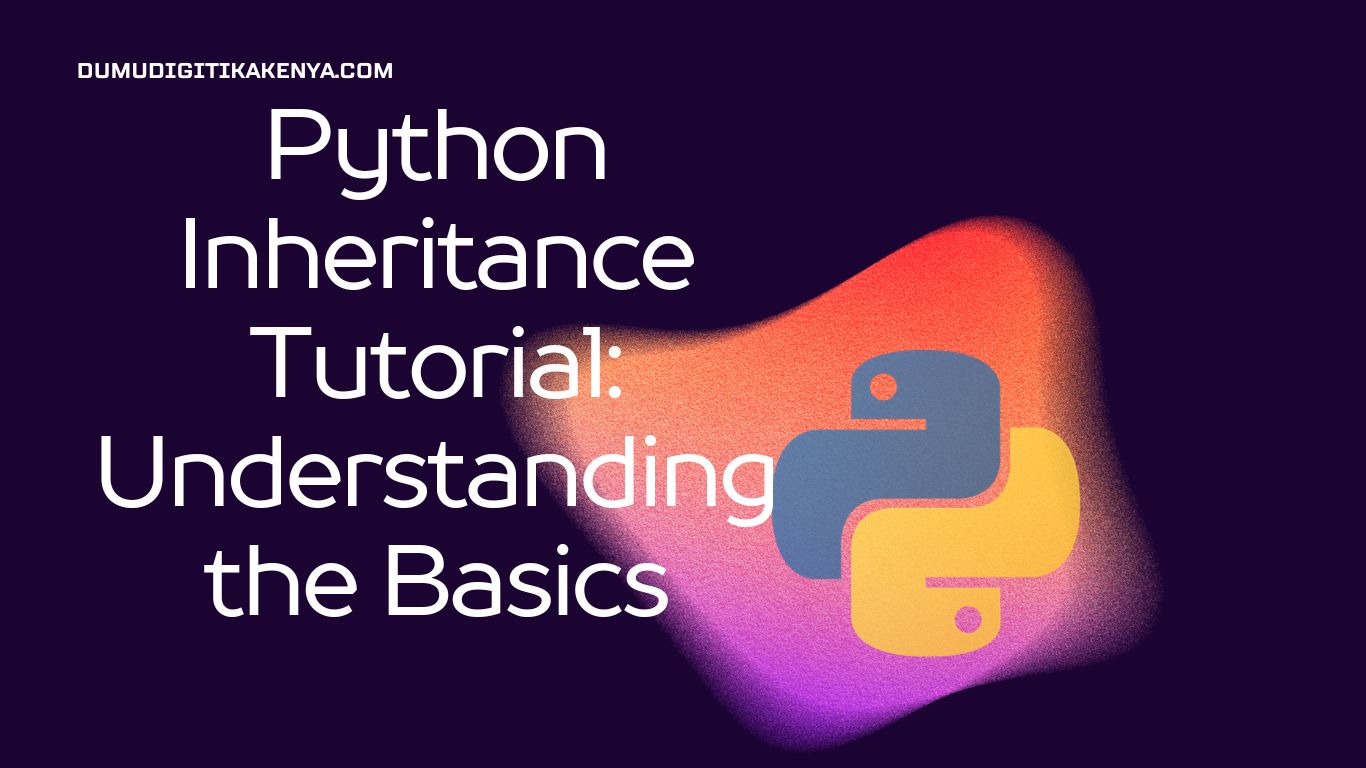Python Inheritance Tutorial: Understanding the Basics
Welcome to our comprehensive Python Inheritance tutorial, where we’ll delve into the fundamental concept of object-oriented programming (OOP) using Python. In the world of programming, understanding inheritance is akin to unlocking a treasure chest of code reusability and organizational prowess. With Python, a language celebrated for its simplicity and readability, grasping the intricacies of inheritance becomes even more accessible.
In this tutorial, we’ll take you on a journey through Python Inheritance, breaking down the concept step by step. You’ll learn how to create parent and child classes, inherit properties and behaviors, and craft efficient and structured code. Whether you’re a novice programmer looking to solidify your OOP foundation or a seasoned developer seeking a Python-specific refresher, this guide will empower you with the knowledge to harness the power of Python Inheritance effectively. So, let’s embark on this educational voyage, unraveling the mysteries of Python Inheritance together.

Table of Contents
Step 1: Understanding Inheritance
Inheritance is a mechanism in Python that allows one class to inherit the properties and behaviors of another class. The class that is inherited from is called the “parent” or “base” class, and the class that inherits is called the “child” or “derived” class.
Step 2: Creating a Parent Class
Let’s start by creating a simple parent class called Animal. This class will have two methods: eat and sleep.
class Animal:
def eat(self):
print("This animal eats food.")
def sleep(self):
print("This animal sleeps.")Step 3: Creating a Child Class
Now, let’s create a child class called Dog that inherits from the Animal class. To do this, we use the class ChildClassName(ParentClassName) syntax.
class Dog(Animal):
passIn this example, Dog is the child class, and it inherits all the methods from the Animal class.
Step 4: Using Inherited Methods
Now that we have our Dog class, let’s create an instance of it and use the inherited methods.
dog_instance = Dog()
dog_instance.eat()
dog_instance.sleep()Output:
This animal eats food.
This animal sleeps.The Dog class can use the eat and sleep methods even though we didn’t define them in the Dog class explicitly. This is the power of inheritance.
Step 5: Adding Additional Methods
Child classes can have their own methods in addition to the inherited ones. Let’s add a method called bark to the Dog class.
class Dog(Animal):
def bark(self):
print("The dog barks.")Step 6: Using Child Class Methods
Now, let’s create a Dog instance and use both the inherited and the new methods.
dog_instance = Dog()
dog_instance.eat()
dog_instance.sleep()
dog_instance.bark()Output:
This animal eats food.
This animal sleeps.
The dog barks.Conclusion
In conclusion, our Python Inheritance tutorial has provided you with a solid foundation in the realm of object-oriented programming within Python. Understanding Python Inheritance is not merely an academic exercise; it’s a key to writing efficient, organized, and maintainable code. By grasping the concepts covered in this tutorial, you’ve unlocked the potential to build complex Python applications with ease.
As you venture further into Python development, remember that inheritance is just one aspect of OOP. The language offers a rich set of tools and features to help you create elegant and powerful solutions. Continue to explore, practice, and apply your newfound knowledge to real-world projects. Python Inheritance is your gateway to a world of coding possibilities, and we hope this tutorial has equipped you with the skills and confidence to excel in your programming journey. So, go forth and inherit the power of Python to create remarkable software!



